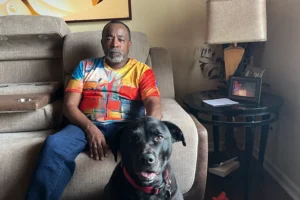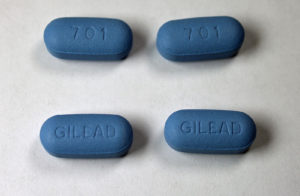Second Man Seemingly AIDS-Free After Stem Cell Transplant
Published online Monday by the journal Nature, the unidentified patient's case will be presented at an HIV conference in Seattle.SEATTLE — A London man appears to be free of the AIDS virus after a stem cell transplant, the second success including the “Berlin patient,” doctors reported.
The therapy had an early success with Timothy Ray Brown, a U.S. man treated in Germany who is 12 years post-transplant and still free of HIV. Until now, Brown is the only person thought to have been cured of infection with HIV, the virus that causes AIDS.
Such transplants are dangerous and have failed in other patients. They’re also impractical to try to cure the millions already infected.
The latest case “shows the cure of Timothy Brown was not a fluke and can be recreated,” said Dr. Keith Jerome of Fred Hutchinson Cancer Research Center in Seattle who had no role. He added that it could lead to a simpler approach that could be used more widely.
The case was published online Monday by the journal Nature and will be presented at an HIV conference in Seattle.
The patient has not been identified. He was diagnosed with HIV in 2003 and started taking drugs to control the infection in 2012. It’s unclear why he waited that long. He developed Hodgkin lymphoma that year and agreed to a stem cell transplant to treat the cancer in 2016.
With the right kind of donor, his doctors figured, the London patient might get a bonus beyond treating his cancer: a possible HIV cure.
Doctors found a donor with a gene mutation that confers natural resistance to HIV. About 1 percent of people descended from northern Europeans have inherited the mutation from both parents and are immune to most HIV. The donor had this double copy of the mutation.
That was “an improbable event,” said lead researcher Ravindra Gupta of University College London. “That’s why this has not been observed more frequently.”
The transplant changed the London patient’s immune system, giving him the donor’s mutation and HIV resistance.
The patient voluntarily stopped taking HIV drugs to see if the virus would come back.
Usually, HIV patients expect to stay on daily pills for life to suppress the virus. When drugs are stopped, the virus roars back, usually in two to three weeks.
That didn’t happen with the London patient. There is still no trace of the virus after 18 months off the drugs.
Brown said he would like to meet the London patient and would encourage him to go public because “it’s been very useful for science and for giving hope to HIV-positive people, to people living with HIV,” he told The Associated Press Monday.
Stem cell transplants typically are harsh procedures which start with radiation or chemotherapy to damage the body’s existing immune system and make room for a new one. There are complications too. Brown had to have a second stem cell transplant when his leukemia returned.
Compared to Brown, the London patient had a less punishing form of chemotherapy to get ready for the transplant, didn’t have radiation and had only a mild reaction to the transplant.
Dr. Gero Hutter, the German doctor who treated Brown, called the new case “great news” and “one piece in the HIV cure puzzle.”
Your support is crucial…With an uncertain future and a new administration casting doubt on press freedoms, the danger is clear: The truth is at risk.
Now is the time to give. Your tax-deductible support allows us to dig deeper, delivering fearless investigative reporting and analysis that exposes what’s really happening — without compromise.
Stand with our courageous journalists. Donate today to protect a free press, uphold democracy and unearth untold stories.






You need to be a supporter to comment.
There are currently no responses to this article.
Be the first to respond.